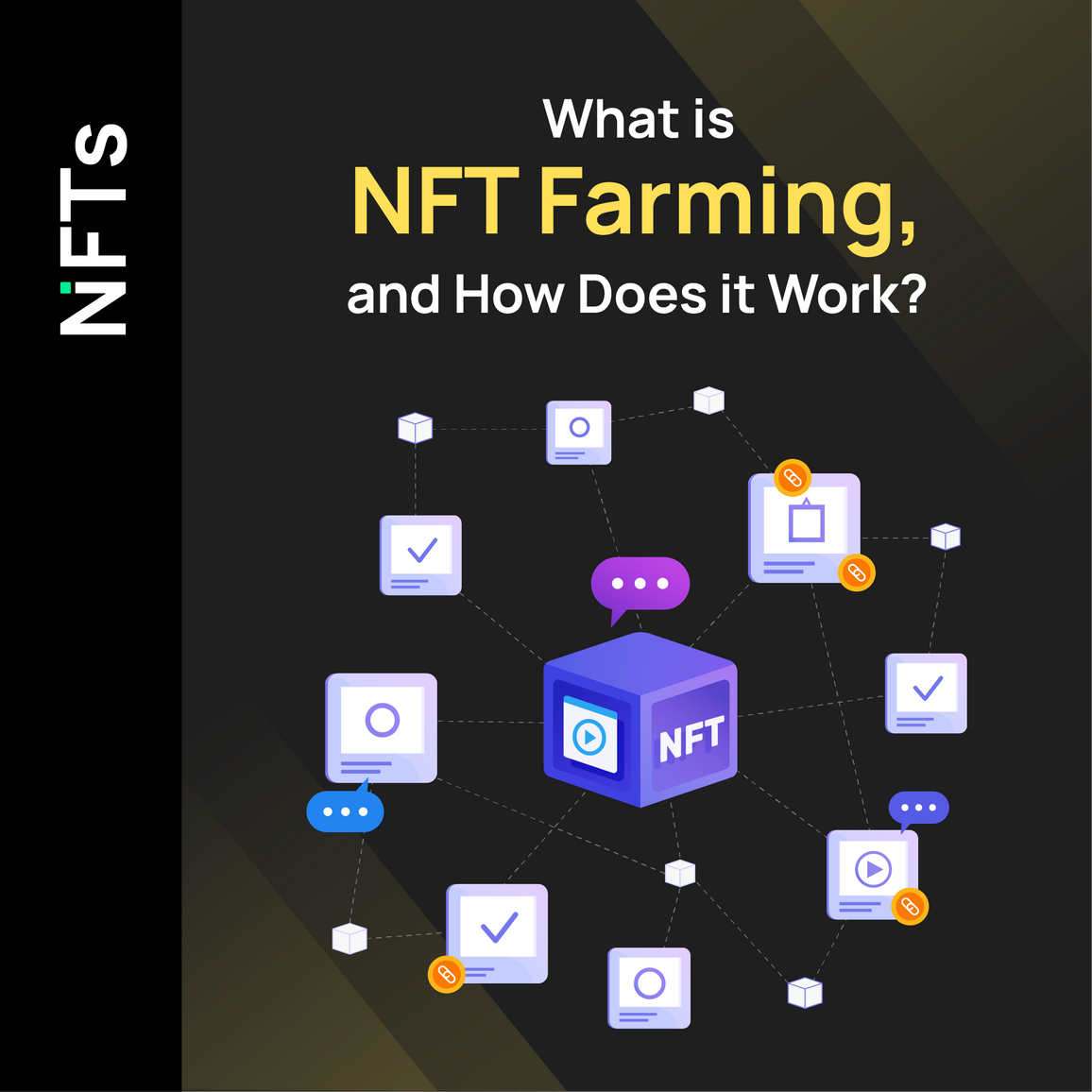What is NFT Farming, and How Does it Work?

NFT: An Outgrown Fad
Non-fungible tokens, popularly called NFTs, have been around for a while. Initially, it was perceived as a fad that won't last long, but it has stayed longer than predicted. NFTs have proven to be beyond just a digital art collection over time. Its originality and ownership values have increased its adoption rates among people, which has also been influenced by some big names jumping on it. Millions of dollars have been spent on its acquisition as it's been perceived to be of high value in the nearest digital revolution.
NFTs are a major asset in the metaverse ecosystem and have given a perfect representation of authentic digital items. They hold instrumental values in VR items, in-game purchases, virtual real estate, digital fashion, gameFi projects, and more. Their use cases have validated their values beyond digital assets. NFT holders can now enjoy trading benefits and liquidity through "NFT farming."
What is NFT Farming?
NFT farming is the process of staking NFTs for a reward or staking tokens for an NFT. It is the trending method of investing NFTs or earning tokens with them. It's similar to the commonly known yield farming in cryptocurrencies, and the only difference is that this involves NFTs.
How NFT Farming Works
The interoperability of NFT due to its existence on a blockchain makes it easy to be used in different applications. It also facilitates its connection with multiple smart contracts or programs. NFT farming traditionally works by staking some tokens in a pool or lending. In the first method, NFTs/tokens are put in a pool that earns rewards per the specified APY (annual percentage yield). A liquidity pool defines a smart contract on a decentralized exchange that acts as storage for tokens and a trading processor. Yield farming allows NFT holders to earn passive income by contributing to this storage and getting rewarded.
On the other hand, the lending aspect simply involves loaning coins that involve a third party. The third-party stands as a guarantor and the terms and conditions for the loan are established. The trade earns rewards for a token holder that has contributed to this.
In NFT farming, you would need a wallet, a digital purse, or an account that holds your assets, tokens as the asset to be held, and pools to join to earn rewards. The reward is dependent on the proportion of tokens staked in a pool.
The Twist in NFT Farming
NFT farming also includes some processes of gamification. This is sometimes referred to as gamified NFT farming. It involves adding a sense of competition and layers of video games to yield farming. It functions well in play-to-earn games, where gamers earn tokens and NFTs through gaming activities. Rules and earning models differ according to each game's structure. It only requires basic gadgets like a desktop and an initial investment to get some in-game purchases to kickstart with the fun-filled earning.
Some NFT Farming Platforms
There are various NFT farming platforms, each with its peculiarities and features. Some of the popular ones are:
- Zookeeper: This is a gamified NFT farming platform based on Wanchain (WAN). It uses NFTs and provides tokens for players. It can also be linked to a liquidity pool to earn rewards.
- Mobox: This platform incorporates several games with different features and NFT farming opportunities. Users on the platform earn tokens in games and receive extra rewards for staking them or lending them out.
- Pulsar Farm: This platform has a peculiarity of alien-like NFTs incorporated in blockchain gaming. They produce two types of tokens: Gamma Pulsar and Gamma Bounty, which can be staked to earn more rewards.
- Bunicorn finance: This platform uses a token called BUNI. They incorporate decentralization, blockchain technology, and NFT gamification. They have a limited lifetime. Players can earn rewards by managing the platform.

Risks in NFT Farming
It will be over-hyped if NFT farming is all good with no potential risks. It follows through with the risks of cryptocurrencies' volatility and price fluctuations. The most significant risk it poses is in its structural components. The composability of NFTs could pose a risk if problems arise in one of the building blocks. A failure in a single block risks the entire system tumbling down. Aside from this, loopholes in smart contracts could also be another potential risk in NFT farming.
Conclusion
NFTs started as unique digital art collections but have been utilized in many ways and sectors. They are an important tool in the digital revolution since they digitally represent originality. They have made waves in fashion, music, entertainment, virtual real estate, gaming, and more industries. As their adoption grows, so do their utilities. NFT farming is a new phenomenon that makes earning easy and more fun-filled for NFT holders. They don't need to be a bonafide owner of online assets but can easily earn through staking, lending, or even participating in gaming activities.
Disclaimer
This article should not be taken as financial or investment advice. Making an investment or financial decision is a choice. Do your research!
About Bit.com
Bit.com is a full-featured cryptocurrency exchange run by Matrixport, one of Asia's fastest-growing financial services platforms for digital assets. Bit.com is dedicated to offering services such as price discovery, trading strategy execution, and liquidity provision. Furthermore, Bit.com constantly promotes the development of new financial products, enhancing user trading instruments, and listing specific tokens. High-quality security and risk management measures are incorporated into the company's design to create an exceptional trading environment.
Sign up on Bit.com, and switch on your future.

